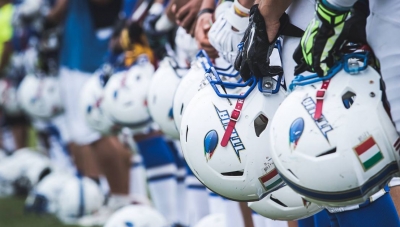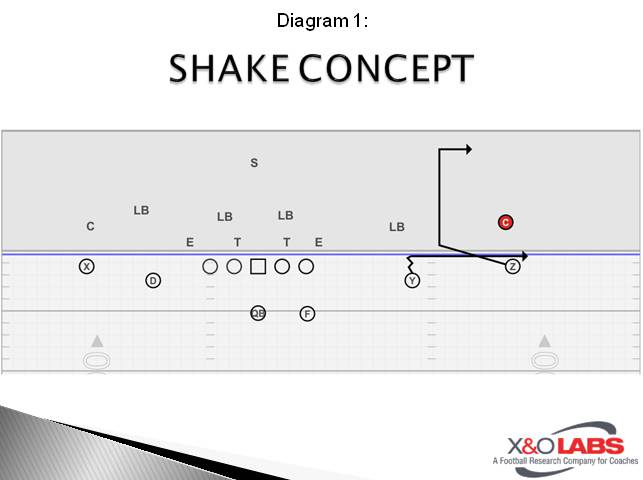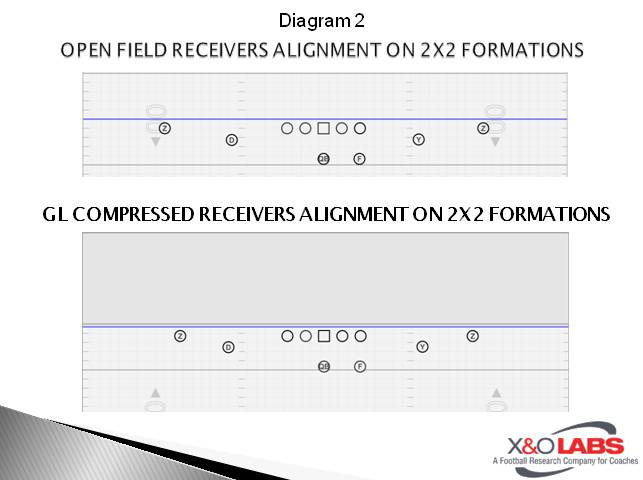By Davide Giuliano
Head Coach /Offensive Coordinator
Italian National American Football Team
Twitter: @ItaliaBlueTeam
Introduction:
 The "rub" concept is our go to play inside the 5 yard line. We know our opponent will isolate our receivers on a man to man coverage and we use the run to take advantage of this coverage. This fits within our 1 back spread no huddle offense and gives us simple answers in the red zone.
The "rub" concept is our go to play inside the 5 yard line. We know our opponent will isolate our receivers on a man to man coverage and we use the run to take advantage of this coverage. This fits within our 1 back spread no huddle offense and gives us simple answers in the red zone.
The name of this concept is from the Shake concept made famous by the Air Raid offense. The two concepts actually look very similar to each other with the exception being that we run it in a very compressed part of the field, essentially against tight man coverage and with no post threat.
Shake is a part of our rub concepts package, often known as pick concepts. We emphasize that picking a defender is technically illegal, so we prefer to use the word rub. All we want to achieve with our rub plays is leverage, referring to the receiver being able to win the route side space and position his body so he can protect the ball from a defender covering him. Once we get leverage, all we need is to put the ball into the hands of the player with best leverage.

Protection:
Before we get into the routes, we should briefly discuss our protection scheme.
We are a vertical set pass protection offense, our base protection is a Slide/man concept with the side of the RB blocking MDM (most-dangerous-man) and the opposite side blocking their outside gap. In each of our quick passing plays, our vertical set technique consists of two drop back steps and punch with the main goal of not letting any free rusher coming from the inside.
We also run some of our short yardage goal line plays out of a rollout protection, so we can get an additional option for the QB to keep the ball and run.
Receivers Assignments
Alignment:
Our standard receiver alignment on a 2x2 formation is as follows:
- Ball spotted on the opposite HM or middle of the field
- Outside receiver lines up on the ball and just inside the numbers
- Inside receiver lines up off the ball and splits the distance between the outside receiver and the EMOL
- Ball spotted on the same HM
- Outside receiver lines up on the ball and 1 yard outside the numbers
- Inside receiver lines up off the ball and splits the distance between the outside receiver and the EMOL
When running most of our goal line pass plays, we tighten up our receivers alignment asking our outside receiver to line up 2 to 3 yards closer to the ball than usual while our inside receiver will line up 41/2 to 5 yards inside of the outside receiver. We use this alignment for the majority of our goal line pass plays not to give the defense any hint on what play we will be running.










